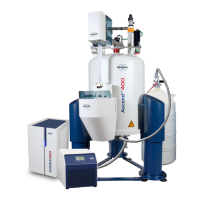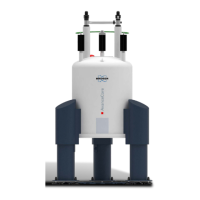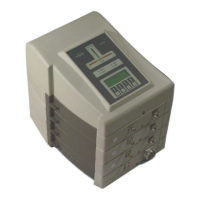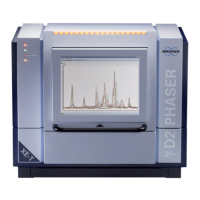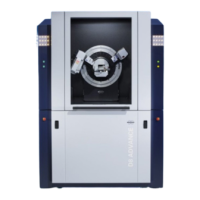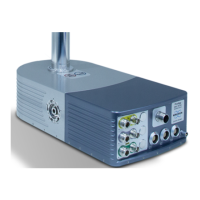Magnet Safety
30 / 48 H171764_6_001
Quench Pipe
This solution is based on a pipe connected directly to the magnet, which is then routed to the
outside of the building. It is important to note the following:
• Ideally, the helium exhaust from the magnet should be vented directly to the outside of the
building in case a quench occurs.
• The ducts to the outside of the building should be of large enough diameter to avoid
excessive pressure build up due to the flow impedance of the duct.
• The location of the exit end of the exhaust duct must not allow unrestricted access to
anyone other than service personnel; in addition the exit opening should be protected
from the ingress of rain, snow or any debris which could block the system.
• It is also essential to ensure that any gas which vents from the exhaust duct cannot be
drawn in to any air conditioning or ventilation system intakes. The location of duct’s exit
should be carefully sited to prevent this from happening in all atmospheric conditions and
winds.
• Insulation of accessible exhaust piping should also be provided to prevent cold burns
during a quench.
Exhaust for Magnet Pits
Special attention to ventilation and emergency exhaust must be given when magnets are
placed inside pits. Magnet pits are confined spaces with a possibility of increased risk of
oxygen depletion if appropriate exhaust measures are not taken.
• Nitrogen is heavier than the air and starts filling the pit from the bottom during the magnet
pre-cool or regular nitrogen fills.
• It is essential to provide a low exhaust system down inside the pit to efficiently evacuate
the nitrogen gas and prevent oxygen depletion.
4.6.4 Oxygen Monitor and Level Sensors
An oxygen monitor is required inside the magnet room. The following monitor and sensors
should be provided:
• Above the magnet: One oxygen level sensor above the magnet, to detect low oxygen
levels due mainly to He gas.
• Close to floor: One oxygen level sensor 1 foot off the floor of the magnet room.
• Down in the pit: One additional oxygen level sensor 1’ off the bottom of the pit, in case the
magnet is located inside a pit.
